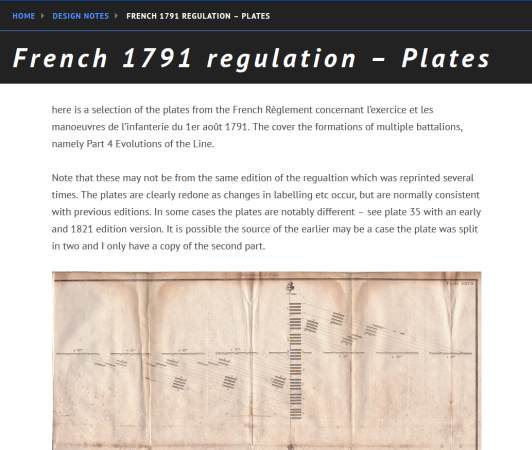By way of an introduction to our forthcoming range of 28mm 1799 Russians figures for the Wars of the French Revolution, we thought we would get everyone in the mood by first releasing the Cossacks. Although we have officially dated these as 1799 (for Suvarov's campaign and other Russian armies of that year), these miniatures can be employed as Cossacks in any campaign during the latter half of the 18th Century and onwards into the Napoleonic Wars.

Suvarov took six regiments of Cossacks with him to Italy in 1799 (rising to eight for operations in Switzerland), and for most of the coming campaign in northern Italy and the Alps against the French, these were his only 'Russian' cavalry. (His Austrian allies supplied him with a few squadrons of dragoons while in Italy.) All the Cossack regiments accompanying Suvarov were Don Cossacks, but Ural Cossacks served with Korsakov's Russian army at Zürich and Hermann's army in Holland, so our new release offers both types for the collector to choose from.
Cossacks were masters of reconnaissance warfare and raiding - the latter fueled by their love of plunder! Their intelligence gathering was invaluable to the Russians, despite most of the Cossack officers being illiterate and so poor they did not possess a watch (which made coordinating operations difficult). Many Russian generals misused them or simply did not understand their role, and accordingly they tended to operate in a semi-independent role led by their Hetman (chief).
However, as the historian Christopher Duffy has pointed out, the conditions of warfare in heavily cultivated north Italy and mountainous Switzerland in 1799 were not suited to the rapid maneuvers and far-ranging light cavalry tactics of the Cossacks. Movement constrained to hard Italian roads or rocky mountain passes in Switzerland was particularly harsh on the unshod hooves of the Cossacks' small but amazingly durable ponies. During the Swiss operations, the Russians were so desperately short of supply mules they were obliged to ask a little over a third of the Cossack force (around 1,500) to give up their privately owned mounts to act as pack animals. The unhorsed Cossacks thus operated as light infantry in the high Alpine passes, with initially 50 dismounted Cossacks being assigned to each Russian division and the rest held in reserve. For this reason, we have included in the range both Don and Ural Cossacks fighting on foot. In spite of these difficulties, the Cossacks continued to demonstrate their renowned fighting qualities and they served Suvarov well.
At this time, the Cossack regiments were not governed in their appearance by any formal army regulations. It was not until 1801 following the assassination of Tsar Paul I that Tsar Alexander II imposed some uniformity. Only the Cossacks units in the Russian Life Guard wore a formal uniform, and just four Cossack regiments - the 1st and 2nd Chuguev regiments and the 1st and 2nd Teptyar regiments - were issued with uniforms in 1798. None of these formations seem to have served in Suvarov's or Korsakov's armies in 1799. A few contemporary illustrations do hint at some regiments having their own particular uniform items of clothing, especially in the Don Cossack regiments where dark blue caftans and breeches trimmed in red (a style destined to become common under Alexander) was perhaps popular, but the vast majority of Cossacks wore whatever they liked on campaign. This was especially the case with the Ural Cossacks who seem to have mainly worn their own ethnic traditional dress. Officers were invariably distinguished by the short leather whips (Nagaika) they carried, and some officers seem to have worn jackets/caftans adorned with cloth tape in a hussar style (in simulation of lace). At least one contemporary source in Italy in 1799 refers to Cossacks wearing looted or acquired civilian coats - the more colorful the better - sometimes several worn one on top of the other! Striped or checked trousers were also popular. Although the rough and ready appearance of the Cossacks was often commented upon by contemporaries, it was also noted that they took a lot of pride in their appearance and that, contrary to the popular image, they looked healthy and they took care to keep themselves clean.
You can read an expanded painting guide for our Cossacks in the Eureka Miniatures "Ideas" section of our website.

Here are the codes and details for the new figures, and details of our new release special offers:
28mm 1799 Cossacks
(part of the Wars of the French Revolution range)
Sculpted by Alan Marsh
100WFR370 - Don Cossack, mounted (6)
100WFR371 - Don Cossack officer (1)
100WFR372 - Don Cossack, dismounted, skirmishing (4)
100WFR373 - Cossacks Looting - 8 piece set
100WFR374 - Ural Cossacks, mounted (6)
100WFR375 - Ural Cossack Officer, mounted (1)
100WFR376 - Ural Cossacks, dismounted, skirmishing (4)
100WFR377 - Ural Cossack Horse holder and horses - 5 piece set (1)
THE "Don Sotnia" DEAL
A complete set of the mounted (6 figures) and dismounted Don Cossacks (4 figures), plus a mounted officer for $49.00 AUD (normally $53.80 AUD)*
THE "Ural Sotnia" DEAL
A complete set of the mounted (6 figures) and dismounted Ural Cossacks (4 figures), plus a mounted officer for $49.00 AUD (normally $53.80 AUD)*
THE "Cossack Host" DEAL
A complete set of every figure and variant in the Cossack release (14 mounted and 8 dismounted), plus the Looting Cossack set and the Ural Cossack Horse Holder with horses set for $120.00 AUD (normally $142.60 AUD)*
* Excluding shipping (and 'Goods and Services Tax' payable by Australian customers only)
Customers in the U.S.A. or the U.K. can choose to order our figures from our representatives Eureka Miniatures U.S.A. or Fighting 15s respectively, as well as directly from us.







